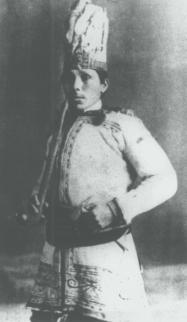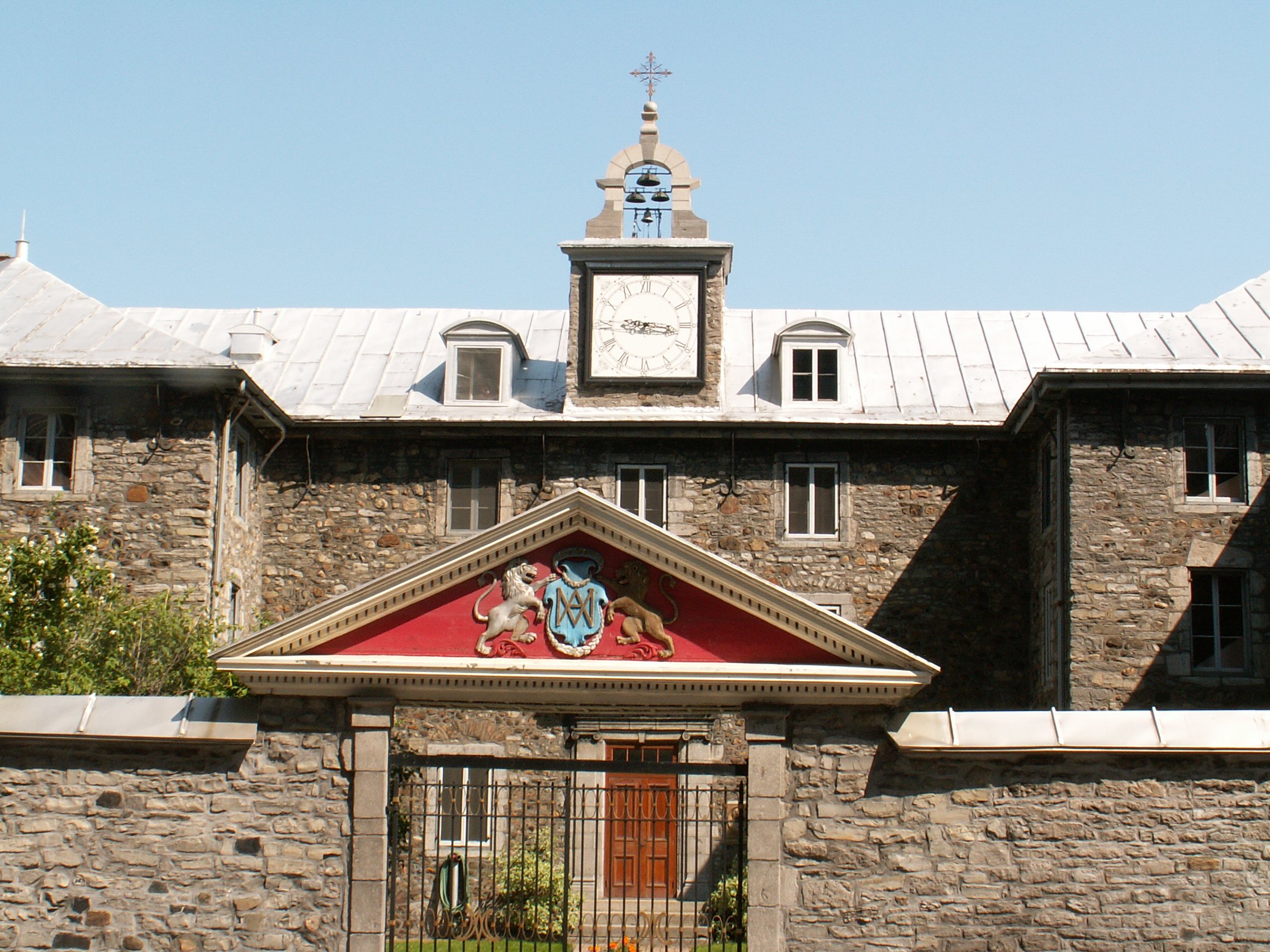|
Joseph Onasakenrat
Joseph Onasakenrat (September 4, 1845 – February 8, 1881), also known as Sosé Onasakenrat, was a Mohawk chief of Kanesatake, one of the Seven Nations of Canada in the eighteenth and nineteenth centuries. Onasakenrat (meaning ''Swan'' or ''White Feather'') was born to a Mohawk family near Oka, Quebec. He was baptized Catholic and named Joseph, and was fluent in Mohawk and French. In 1860, he entered the Petit Séminaire de Montréal where he studied for the priesthood for about three years. He returned to Oka and was appointed as secretary of the Sulpician mission. On July 25, 1868, Onasakenrat was elected chief of the Mohawk community. Almost immediately, he travelled to Ottawa to meet with the Superintendent of Indian Affairs. Onasakenrat petitioned the government to return land to the Mohawks which was, at the time, held by the Sulpicians. The Mohawk had learned that the Sulpicians had changed the terms of an earlier land grant deed and, rather than holding the land in trus ... [...More Info...] [...Related Items...] OR: [Wikipedia] [Google] [Baidu] |
Joseph Onasakenrat
Joseph Onasakenrat (September 4, 1845 – February 8, 1881), also known as Sosé Onasakenrat, was a Mohawk chief of Kanesatake, one of the Seven Nations of Canada in the eighteenth and nineteenth centuries. Onasakenrat (meaning ''Swan'' or ''White Feather'') was born to a Mohawk family near Oka, Quebec. He was baptized Catholic and named Joseph, and was fluent in Mohawk and French. In 1860, he entered the Petit Séminaire de Montréal where he studied for the priesthood for about three years. He returned to Oka and was appointed as secretary of the Sulpician mission. On July 25, 1868, Onasakenrat was elected chief of the Mohawk community. Almost immediately, he travelled to Ottawa to meet with the Superintendent of Indian Affairs. Onasakenrat petitioned the government to return land to the Mohawks which was, at the time, held by the Sulpicians. The Mohawk had learned that the Sulpicians had changed the terms of an earlier land grant deed and, rather than holding the land in trus ... [...More Info...] [...Related Items...] OR: [Wikipedia] [Google] [Baidu] |
Mohawk Nation
The Mohawk people ( moh, Kanienʼkehá꞉ka) are the most easterly section of the Haudenosaunee, or Iroquois Confederacy. They are an Iroquoian-speaking Indigenous people of North America, with communities in southeastern Canada and northern New York State, primarily around Lake Ontario and the St. Lawrence River. As one of the five original members of the Iroquois League, the Kanienʼkehá꞉ka are known as the Keepers of the Eastern Door – the traditional guardians of the Iroquois Confederation against invasions from the east. Historically, the Kanienʼkehá꞉ka people were originally based in the valley of the Mohawk River in present-day upstate New York, west of the Hudson River. Their territory ranged north to the St. Lawrence River, southern Quebec and eastern Ontario; south to greater New Jersey and into Pennsylvania; eastward to the Green Mountains of Vermont; and westward to the border with the Iroquoian Oneida Nation's traditional homeland territory. Kanienʼkehá ... [...More Info...] [...Related Items...] OR: [Wikipedia] [Google] [Baidu] |
Kanesatake
Kanesatake (''Kanehsatà:ke'' in Mohawk) is a Mohawk (''Kanien'kéha:ka'' in Mohawk) settlement on the shore of the Lake of Two Mountains in southwestern Quebec, Canada, at the confluence of the Ottawa and Saint Lawrence rivers and about west of Montreal. People who reside in ''Kanehsatà:ke'' are referred to as Mohawks of Kanesatake (''Kanehsata'kehró:non'' in Mohawk). As of 2022, the total registered population was 2,751, with a total of about 1,364 persons living on the territory. Both they and the Mohawk of Kahnawake, Quebec (''Kahnawà:ke'' in Mohawk), a reserve located south of the river from Montreal, also control and have hunting and fishing rights to Doncaster 17 Indian Reserve (''Tiowéro:ton'' in Mohawk)."Mohawks of Kanesatake" , ''Aboriginal Communities'', Government of Canada The Mohawk peop ... [...More Info...] [...Related Items...] OR: [Wikipedia] [Google] [Baidu] |
Oka, Quebec
Oka is a small village on the northern bank of the Ottawa River (''Rivière des Outaouais'' in French), northwest of Montreal, Quebec, Canada. Located in the Laurentian Mountains, Laurentians valley on Lake of Two Mountains, where the Ottawa has its confluence with the St. Lawrence River, the town is connected via Quebec Route 344. It is located 50 km (30 miles) west of Montreal. The area was first established in 1721 by Catholic Church, Roman Catholic Sulpician Fathers as a mission to serve the needs of Mohawk people, Mohawk, Algonquin people, Algonquin and Nipissing First Nation, Nipissing converts as well as of French settlers. In 1730, the mission site was moved about 1.5 km west along the shore to Pointe d'Oka (Oka's Point) close to where the first stone church was built in 1733, and around which church evolved the village that eventually became known as Oka. The Mohawks had been assigned to a west-side village that eventually became known as Kanesatake whereas the Algonquins ... [...More Info...] [...Related Items...] OR: [Wikipedia] [Google] [Baidu] |
Petit Séminaire De Montréal
Petite or petite may refer to: *Petit (crater), a small, bowl-shaped lunar crater on Mare Spumans *Petit (EP), ''Petit'' (EP), a 1995 EP by Japanese singer-songwriter Ua *Petit (typography), another name for brevier-size type *Petit four *Petit Gâteau *Petit Jean State Park, Arkansas, United States *Petit juror *Petite bourgeoisie in sociology *petite mutation, a mutation in yeast oxidative phosphorylation *Petite sizes in women's clothing *Petit's triangle (inferior lumbar triangle), see Petit's hernia People *A French or Catalan surname: **Adriana Petit (born 1984), Spanish multidisciplinary artist **Alexis Thérèse Petit (1791–1820), French physicist **Amandine Petit (born 1997), French model, beauty pageant titleholder, and Miss France 2021 **Antoine Petit (1722–1794), French physician **Antoni Martí Petit, prime minister of Andorra **François Pourfour du Petit (1664–1741), French anatomist **Henriette Petit (1894-1983), Chilean painter **Jean-Martin Petit (1772–1 ... [...More Info...] [...Related Items...] OR: [Wikipedia] [Google] [Baidu] |
Sulpician
The Society of Priests of Saint-Sulpice (french: Compagnie des Prêtres de Saint-Sulpice), abbreviated PSS also known as the Sulpicians is a society of apostolic life of Pontifical Right for men, named after the Church of Saint-Sulpice, Paris, where it was founded. The members of the Society add the nominal letters PSS after their names to indicate membership in the Congregation. Typically, priests become members of the Society of the Priests of St. Sulpice only after ordination and some years of pastoral work. The purpose of the society is mainly the education of priests and to some extent parish work. As their main role is the education of those preparing to become priests, Sulpicians place great emphasis on the academic and spiritual formation of their own members, who commit themselves to undergoing lifelong development in these areas. The Society is divided into three provinces, operating in various countries: the Province of France, Canada, and the United States. In Franc ... [...More Info...] [...Related Items...] OR: [Wikipedia] [Google] [Baidu] |
Ottawa
Ottawa (, ; Canadian French: ) is the capital city of Canada. It is located at the confluence of the Ottawa River and the Rideau River in the southern portion of the province of Ontario. Ottawa borders Gatineau, Quebec, and forms the core of the Ottawa–Gatineau census metropolitan area (CMA) and the National Capital Region (NCR). Ottawa had a city population of 1,017,449 and a metropolitan population of 1,488,307, making it the fourth-largest city and fourth-largest metropolitan area in Canada. Ottawa is the political centre of Canada and headquarters to the federal government. The city houses numerous foreign embassies, key buildings, organizations, and institutions of Canada's government, including the Parliament of Canada, the Supreme Court, the residence of Canada's viceroy, and Office of the Prime Minister. Founded in 1826 as Bytown, and incorporated as Ottawa in 1855, its original boundaries were expanded through numerous annexations and were ultimately ... [...More Info...] [...Related Items...] OR: [Wikipedia] [Google] [Baidu] |
List Of Canadian Superintendents-General Of Indian Affairs
A ''list'' is any set of items in a row. List or lists may also refer to: People * List (surname) Organizations * List College, an undergraduate division of the Jewish Theological Seminary of America * SC Germania List, German rugby union club Other uses * Angle of list, the leaning to either port or starboard of a ship * List (information), an ordered collection of pieces of information ** List (abstract data type), a method to organize data in computer science * List on Sylt, previously called List, the northernmost village in Germany, on the island of Sylt * ''List'', an alternative term for ''roll'' in flight dynamics * To ''list'' a building, etc., in the UK it means to designate it a listed building that may not be altered without permission * Lists (jousting), the barriers used to designate the tournament area where medieval knights jousted * ''The Book of Lists'', an American series of books with unusual lists See also * The List (other) * Listing (di ... [...More Info...] [...Related Items...] OR: [Wikipedia] [Google] [Baidu] |
Excommunicate
Excommunication is an institutional act of religious censure used to end or at least regulate the communion of a member of a congregation with other members of the religious institution who are in normal communion with each other. The purpose of the institutional act is to deprive, suspend, or limit membership in a religious community or to restrict certain rights within it, in particular, those of being in communion with other members of the congregation, and of receiving the sacraments. It is practiced by all of the ancient churches (such as the Catholic Church, Oriental Orthodox churches and the Eastern Orthodox churches) as well as by other Christian denominations, but it is also used more generally to refer to similar types of institutional religious exclusionary practices and shunning among other religious groups. The Amish have also been known to excommunicate members that were either seen or known for breaking rules, or questioning the church, a practice known as shu ... [...More Info...] [...Related Items...] OR: [Wikipedia] [Google] [Baidu] |
Methodism
Methodism, also called the Methodist movement, is a group of historically related denominations of Protestant Christianity whose origins, doctrine and practice derive from the life and teachings of John Wesley. George Whitefield and John's brother Charles Wesley were also significant early leaders in the movement. They were named ''Methodists'' for "the methodical way in which they carried out their Christian faith". Methodism originated as a revival movement within the 18th-century Church of England and became a separate denomination after Wesley's death. The movement spread throughout the British Empire, the United States, and beyond because of vigorous missionary work, today claiming approximately 80 million adherents worldwide. Wesleyan theology, which is upheld by the Methodist churches, focuses on sanctification and the transforming effect of faith on the character of a Christian. Distinguishing doctrines include the new birth, assurance, imparted righteousness, ... [...More Info...] [...Related Items...] OR: [Wikipedia] [Google] [Baidu] |
Gospels
Gospel originally meant the Christian message ("the gospel"), but in the 2nd century it came to be used also for the books in which the message was set out. In this sense a gospel can be defined as a loose-knit, episodic narrative of the words and deeds of Jesus, culminating in Trial of Jesus, his trial and Crucifixion of Jesus, death and concluding with various reports of Post-resurrection appearances of Jesus, his post-resurrection appearances. Modern scholars are cautious of relying on the gospels uncritically, but nevertheless, they provide a good idea of the public career of Jesus, and critical study can attempt to distinguish the original ideas of Jesus from those of the later authors. The four canonical gospels were probably written between AD 66 and 110. All four were anonymous (with the modern names added in the 2nd century), almost certainly none were by eyewitnesses, and all are the end-products of long Oral tradition, oral and written transmission. Gospel of Mark, Mark ... [...More Info...] [...Related Items...] OR: [Wikipedia] [Google] [Baidu] |


.jpg)



.jpg)
